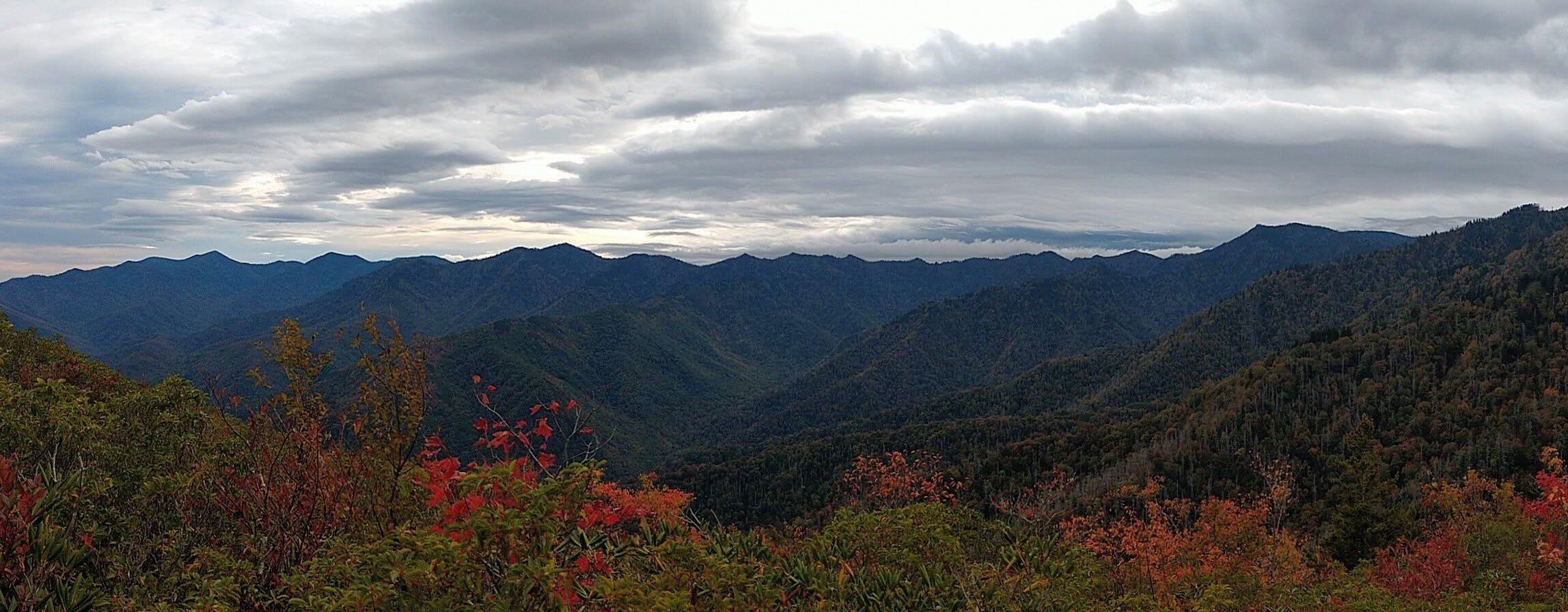View of the Upper Little Pigeon River watershed from Brushy Mountain in the Great Smokey Mountains National Park.
The role of aridity in shaping landscape genomic relationships in aquatic invertebrates of the Southern United Sates
Samuel C. Silknetter and Meryl C. Mims
Dept. of Biological Sciences, Virginia Polytechnic Institute and State University
Mentored Undergraduates: Ashley Fitzgerald
This research project will use multispecies comparisons to examine landscape genetic/genomic relationships of aquatic insects as part of StreamCLIMES, a new NSF-funded MacroSystems Biology project studying biodiversity, food web structure, and genetic connectivity of stream benthic invertebrate communities. The project focuses on differences between perennial and intermittent stream sites across the lateral aridity gradient that exists in the southern United States. This collaborative project includes other investigators examining many diverse aspects of freshwater science (Michael Bogan, University of Arizona; Katie Costigan, University of Louisiana Lafayette; Ben Ruddell and Abe Springer, Northern Arizona University; Albert Ruhi, University of California Berkeley; Robert Pastel, Michigan Tech University; Dan Allen, Tom Neeson, and Yang Hong at the University of Oklahoma). For the Mims Lab, the goal is to understand how intermittent stream hydrology affects genetic diversity and population structure of stream macroinvertebrate communities. By using both genetic and genomic approaches, this research will be able to infer both neutral and adaptive influences on molecular structure. Integrating the effects of stream drying and hydrologic connectivity on biological communities will allow us to update existing models of stream ecology and better predict how stream ecosystems will respond to future climate variability.
Project status: StreamCLIMES is transitioning from an initial planning phase to the first year of data collection, and site scouting is under way as of Fall 2019. Of 10 sites spread throughout the southern U.S., the Mims Lab is responsible for 2: the Upper Little Pigeon River near Sevierville, TN (pictured above), and Passage Creek near Fort Valley, VA. Following scouting, preliminary invertebrate samples will be collected and hydrologic sensors will be deployed.
